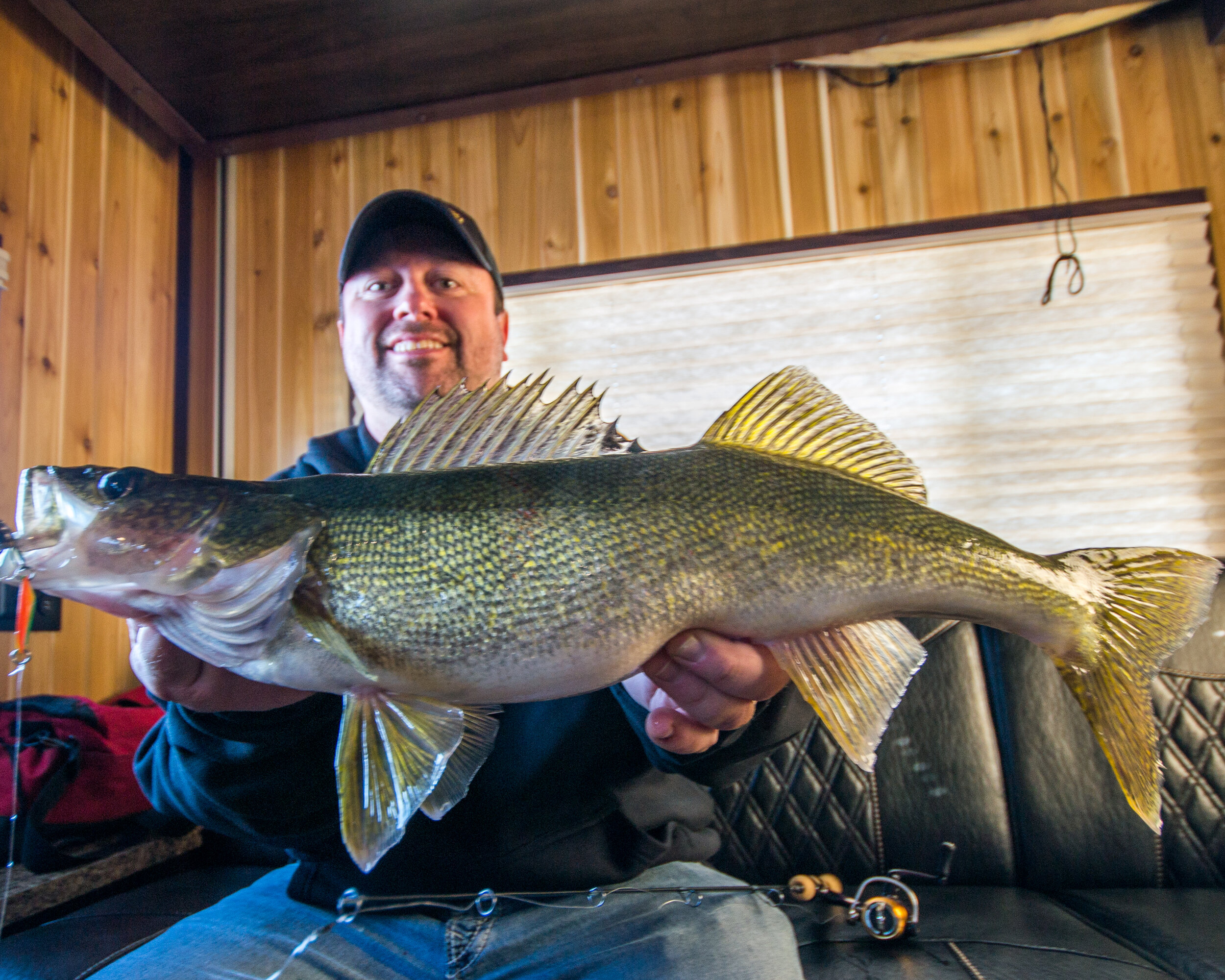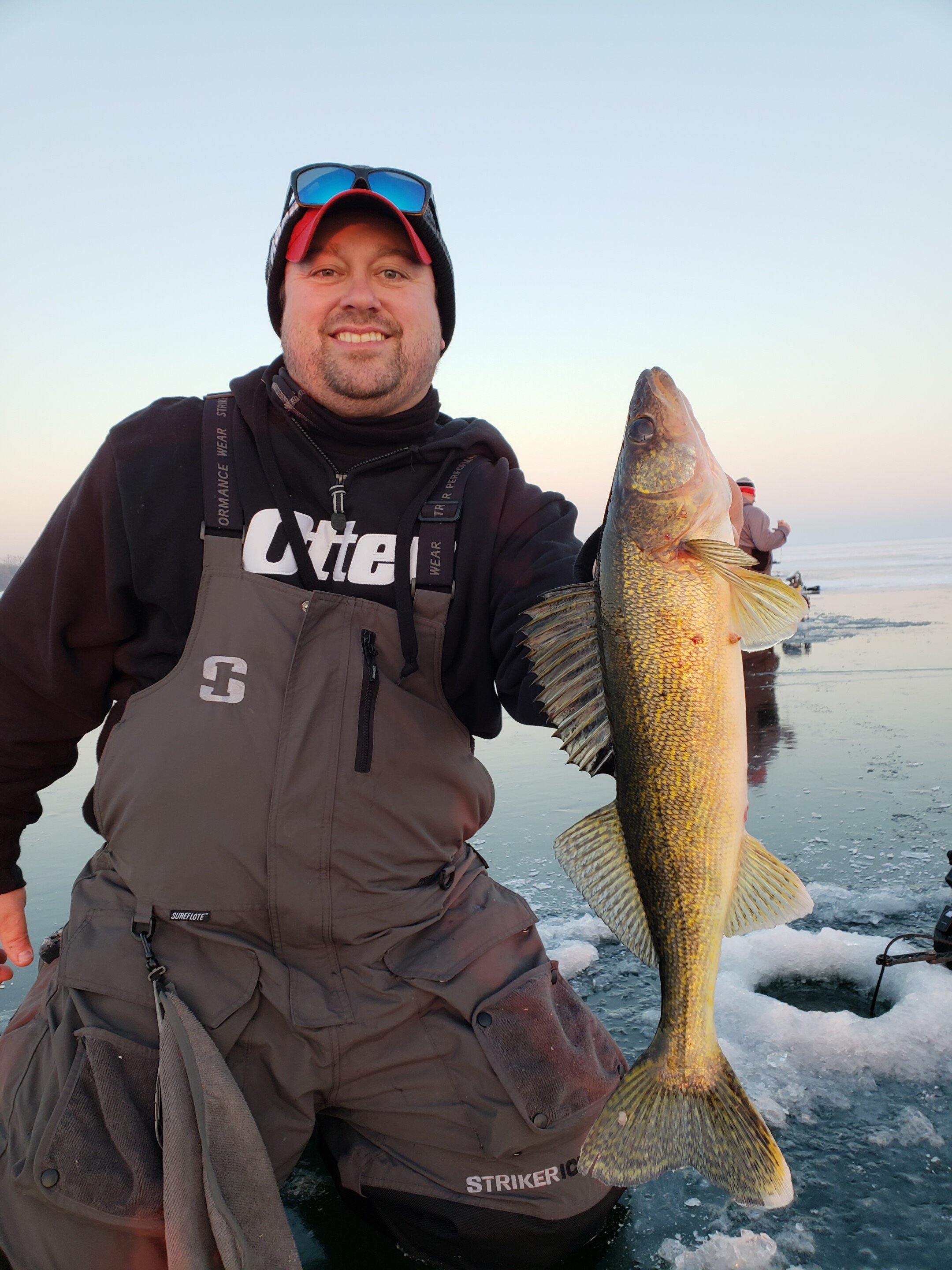If you own a mobile semi-permanent ice shelter of any kind, this winter you’ll likely face a familiar conundrum each time you setup on your favorite lake. Where to put it? Or, from another perspective, how far off the beaten path dare I go? It’s a tough question with a variety of solutions, and sometimes none, depending on the ice conditions, snow depth, tow vehicle, and a host of other considerations.
Ask a resort owner, plow truck driver, or avid ice angler about traffic patterns on their favorite water body, and they’ll give you similar answers. People and pressure follow a predictable path. First from the public accesses on early ice and popular resorts if they exist where you fish, out to the shallow shoreline breaks and eventually further and further to off-shore structure more mid-lake. Community holes setup in familiar locations year-over-year, until fishing gets tougher in them, which is when people start fishing edges and get a bit more spread out again. Hot bites pop-up here and there, villages relocate, only to be broken up and move again the following weekend.
As anglers, I think we’re programmed to a “grass is greener” mentality, which is often true when it comes to the fishing, yet rarely goes unpunished by the lake gods. Just this weekend I was on Upper Red Lake, lamenting lake traffic that eventually started moving right past my wheelhouse in greater and greater frequency. I’ve written about truck traffic before, and the effect I’ve observed on underwater cameras with real fish before. Now put that on 10 FOW with thousands of trucks and wheelhouses, and the effect is multiplied.
After a reasonable evening fish, I decided to head to some open ice, much to the dismay of my quite comfortable family. Thank goodness for good friends who nearly got stuck themselves yanking me out of a snow-drift. Yet, I feel quite strongly that had I made the corner, we would’ve been more successful a quarter-mile away from the nearest shelter, rather than just 100 yards. Super slick ice underneath only moderate snow was the culprit this time, and despite shovels and straps, I was stuck nonetheless. New tire chains are on their way as we speak.
It’s important to note that most larger wheelhouse wheelbases travel outside of your tow vehicle’s, meaning you’re dragging that trailer through new snow you haven’t packed down yet. High-centering on packed snow then is the real killer, even if you’ve built up speed, making it imperative that you’ve got your trailer tongue height set appropriately to minimize un-evenness or spots where the trailer will catch on the snow. You’ll still likely need a good shovel or two, a tow-strap, maybe even chains, but smart trailer setup will make travel both on road and off that much easier.
So will using your truck’s equipment and features to the best of its potential. Good tires are worth their weight in gold, and there’s plenty of space on the internet devoted to opinions on which are best. That said, out on the open ice, good tires won’t help you if you’re not using your 4WD, with any automatic traction control “off,” and differential lock “on” if you have it. When stuck, switching to a 4WDL for “LOW” can benefit you by keeping the wheels from immediately spinning fast on slick ice too.
Speed is your friend but also your enemy. You need it to maintain momentum and carry you through tight spots, but even if you get through a big drift with your truck, the trailer usually gets hung up on it. Which means you’re usually not just stuck, but you’re really stuck. So, reading the snow and ice then is of primary importance, such that you never hit that big drift. Good sunglasses and traveling during good light out on the open ice is imperative for getting off-trail without getting stuck.
Driving patterns are important too. Just like it’s easier to pull a logging chain straight through the brush than around a corner, your wheelhouse wants to go straight too. Most times when you do get stuck, it’s when executing a turn. Turns are inevitable, though you can make them gradually. When I find a patch of open ice I want to settle on, I start a slight, tear-drop shaped driving pattern where I use the truck and wheelhouse to pack-down the snow for a few passes in what gradually becomes a really large circle. I settle on the backside of the curve, after I’ve made the turn and have straightened out. That ensures when I go to pull out the wheelhouse, I won’t have to make a sharp corner, and that freshly broken snow resets and gets harder for the next day.
Eventually, snow depth limits lake travel to main roads and that’s when it gets dicey as a wheelhouse owner. That’s where people crowd onto roads and bad decisions get made. At this point in the season, it’s worth knowing a buddy with a plow, owning one yourself, or paying a resort to plow you in and out. Not only are you more likely to have a decent spot to yourself, but you’ve also got some help on reserve if you need it. You’ll have to be flexible with their schedule, and certainly pay them well for their efforts, but I’ve found it to be worth it when snow depths prohibit off-trail travel.
Be smart out there. Come prepared with a tool kit when you can, and travel in groups if possible. Many hands make for light work when you’re stuck and expect it to happen now and again. Learning how to get unstuck is part of the process, and it’s nice to both get help and give it. If you see someone buried without help, and you can lend a hand without getting stuck yourself, it’s usually worth it from my experience. After this past weekend of taking more from the jar than putting back in, I owe it to more than a few of you. See you on the ice.






